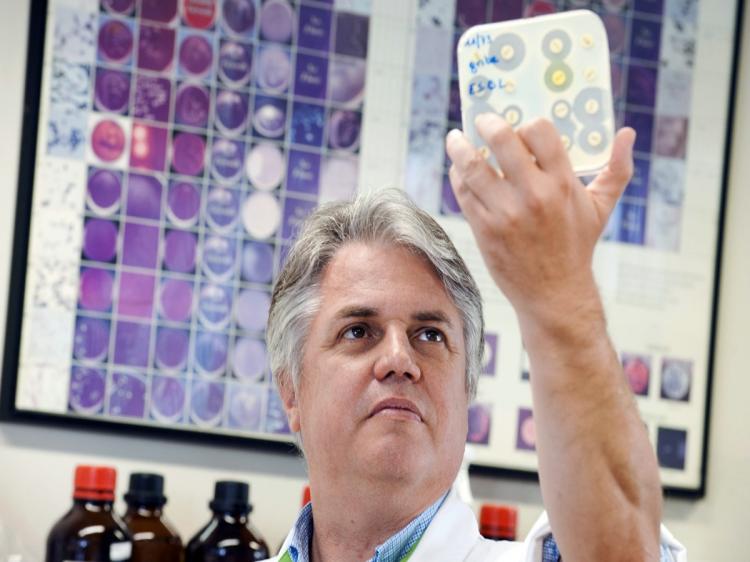Researchers from Newcastle University in the U.K. have found that bacteria have the sense of olfaction.
The study, conducted by Dr. Reindert Nijland (now at University Medical Center Utrecht in the Netherlands) and Dr. J. Grant Burgess, was published online Aug. 18 in Biotechnology Journal.
“This is the first evidence of a bacterial ‘nose’ capable of detecting potential competitors,” Nijland said in a press release.
According to the researcher paper, it has already been known that bacteria have the senses of sight, touch, and taste; and plants, slime molds, and yeast can “smell their environment and respond accordingly.”
The researchers conducted their study on Bacillus licheniformis, a bacterium commonly found in the soil. They observed that growing this bacterium near compartments containing other bacteria strains or growth media would induce the bacterium to form pigments and biofilm, an aggregate of bacteria adhering to each other using a matrix of materials produced by the cells.
Further examination suggested that these reactions were induced by ammonia, so the researchers placed aqueous solutions of ammonia in compartments near Bacillus licheniformis, which had the same reactions as when there were other bacteria strains or growth media nearby. This finding confirmed that the Bacillus licheniformis can “sense and respond to volatile ammonia,” according to the research paper.
“Our work shows for the first time that a sense of smell even exists in lowly bacteria,” said Burgess. “This is an important breakthrough which also shows how complex bacteria are and how they use a growing number of ways to communicate with each other.”
To read the research paper, please visit http://onlinelibrary.wiley.com/doi/10.1002/biot.201000174/pdf
The study, conducted by Dr. Reindert Nijland (now at University Medical Center Utrecht in the Netherlands) and Dr. J. Grant Burgess, was published online Aug. 18 in Biotechnology Journal.
“This is the first evidence of a bacterial ‘nose’ capable of detecting potential competitors,” Nijland said in a press release.
According to the researcher paper, it has already been known that bacteria have the senses of sight, touch, and taste; and plants, slime molds, and yeast can “smell their environment and respond accordingly.”
The researchers conducted their study on Bacillus licheniformis, a bacterium commonly found in the soil. They observed that growing this bacterium near compartments containing other bacteria strains or growth media would induce the bacterium to form pigments and biofilm, an aggregate of bacteria adhering to each other using a matrix of materials produced by the cells.
Further examination suggested that these reactions were induced by ammonia, so the researchers placed aqueous solutions of ammonia in compartments near Bacillus licheniformis, which had the same reactions as when there were other bacteria strains or growth media nearby. This finding confirmed that the Bacillus licheniformis can “sense and respond to volatile ammonia,” according to the research paper.
“Our work shows for the first time that a sense of smell even exists in lowly bacteria,” said Burgess. “This is an important breakthrough which also shows how complex bacteria are and how they use a growing number of ways to communicate with each other.”
To read the research paper, please visit http://onlinelibrary.wiley.com/doi/10.1002/biot.201000174/pdf



